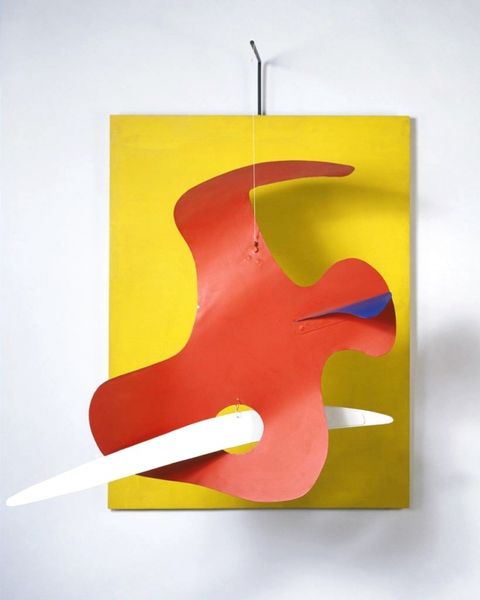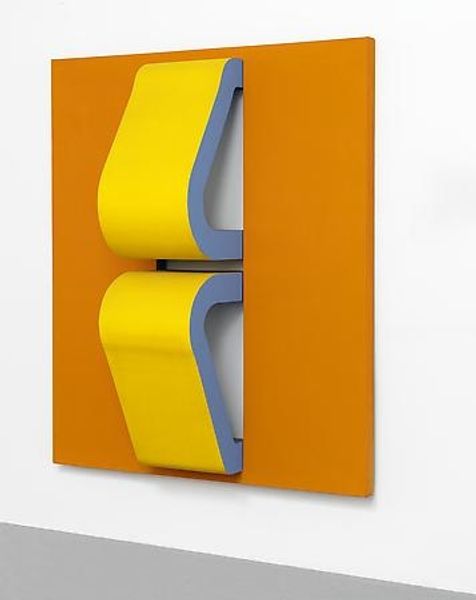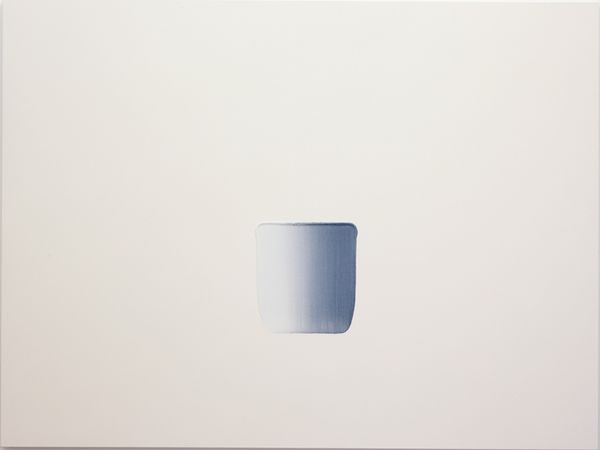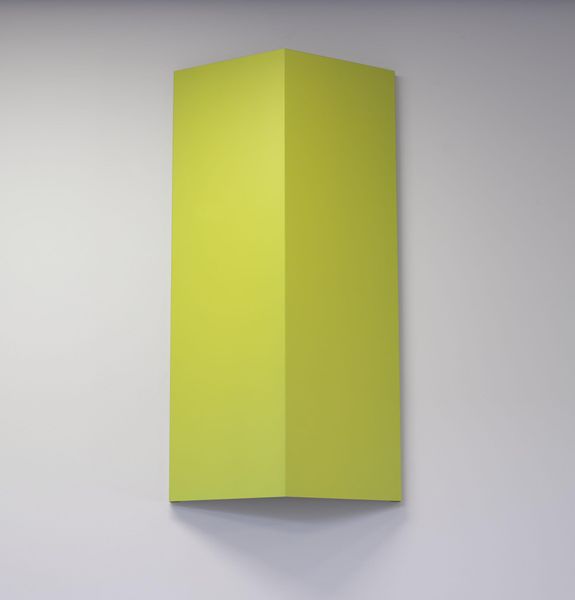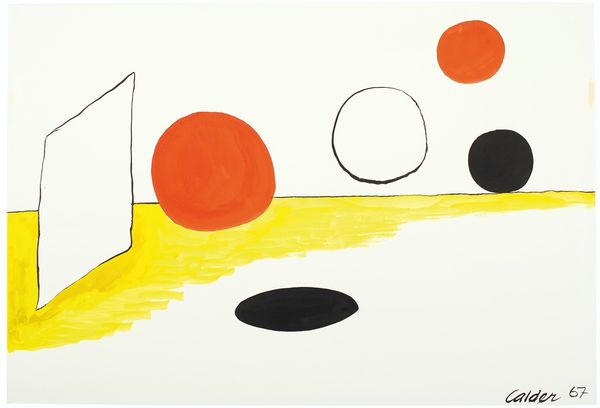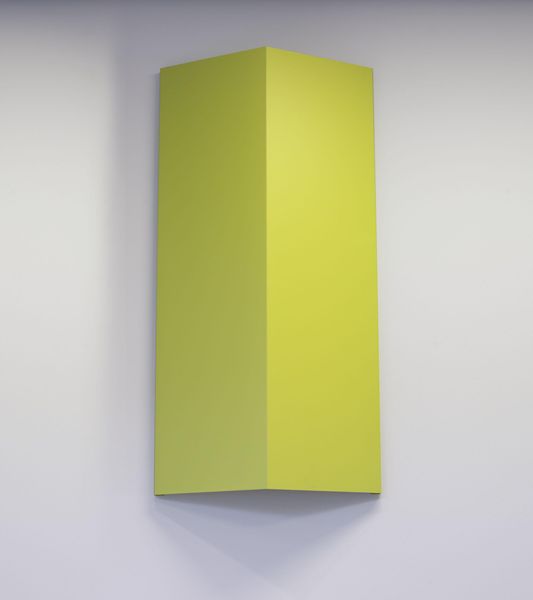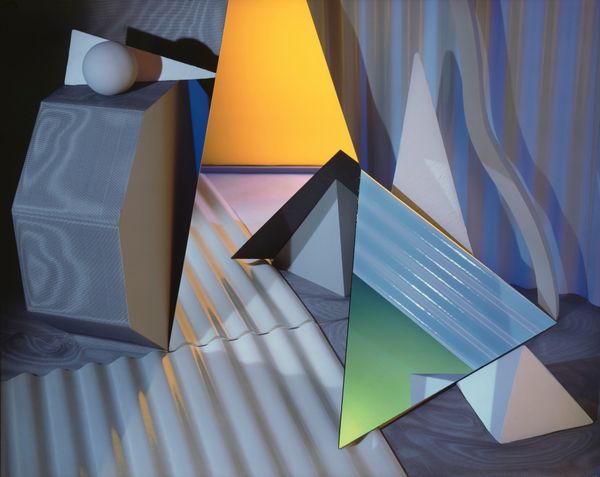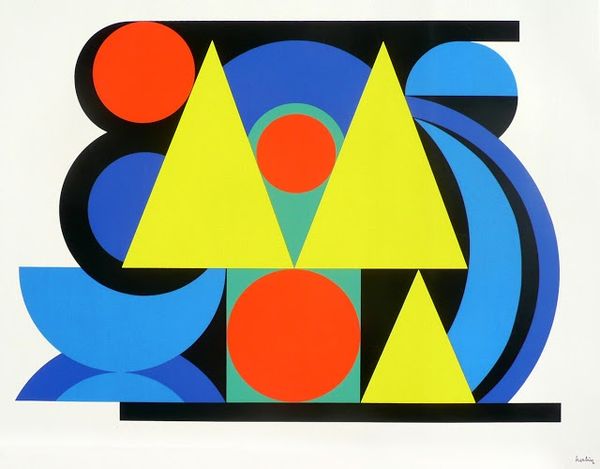
painting, acrylic-paint
#
painting
#
appropriation
#
acrylic-paint
#
geometric
#
pop-art
#
modernism
Copyright: Modern Artists: Artvee
Curator: Immediately, what strikes me is the scale. These forms tower; the daffodil almost menacing. Editor: Today, we're exploring Tom Wesselmann's "Still Life #57," an acrylic on canvas creation from 1969-1970, deeply embedded within the Pop Art movement. Curator: Pop it certainly is. I'm intrigued by how the everyday—an orange, a radio, even a light switch—is presented as almost monumental, demanding attention. It feels like Wesselmann is confronting consumer culture head-on. Are these objects truly innocent, or are they symbols loaded with cultural meaning, reflections of societal obsessions? Editor: The arrangement! The geometric abstraction is striking; the composition echoes classic still-life traditions, but then it rebels against them. The intense flattening of depth disrupts expectations, playing with semiotic space and the relationship between reality and representation. Consider the symbolic weight of the materials; there is a dialogue between hard-edged forms and the illusion of real objects that needs decoding to fully grasp Wesselmann's objective here. Curator: Absolutely, and what about the context of its creation? This work arises during a period of immense social and political upheaval, challenging notions of the "traditional" and creating opportunities for challenging old constructs. Doesn't that hyper-reality reflect how the media bombards us with idealized images, constructing a reality that feels more artificial than authentic? Editor: The pure audacity! It is as if he takes mundane items and puts them on display. It’s bold. I can sense, too, some visual irony, that Pop style, a modern language meant for accessibility—which gives it an appealing complexity. Curator: It's interesting to note how the gendered aspect of "still life" and domesticity might tie into Wesselmann’s other series of artworks—especially the Great American Nudes. Thinking intersectionally, what might the role of Pop Art be in dismantling hegemonic standards around body image? Editor: From a formalist perspective, these juxtapositions and disjunctions are meant to create visual discord, prompting analysis into their composition beyond superficial interpretations of his art, a calculated intervention into what an image could and should be. Curator: The conversation generated speaks volumes. That disruption, in itself, has the potential to push toward more nuanced narratives that reshape how we see and challenge what’s accepted. Editor: The more we observe this canvas, the deeper its resonance reverberates in its historical and cultural moment, as well as the artistic dialogue it continues to foster, encouraging endless perspectives on the enduring power of art.
Comments
No comments
Be the first to comment and join the conversation on the ultimate creative platform.


